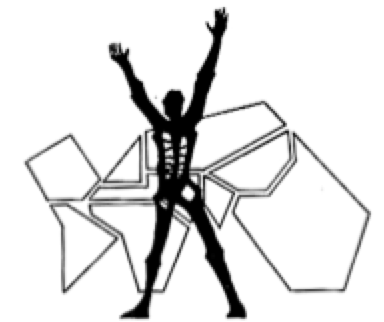Other World
Awe-filled living
On the way to the play we stopped to look at the stars. And as usual, I felt in awe. And then I felt even deeper in awe at this capacity we have to be in awe about something…. I decided I would set time aside each day to do awe-robics.
Jane Wagn
“the Other World may be the most crucial key there is for actually turning on the processes that will snowball the arrival of a new web of relationships that define society.” Joseph W. Mathews
What is the Other World in the midst of this world?
The Recovery of the Other World Bending History talks of Joseph Wesley Mathews: The Recovery of the Other World (1972) P. 168-171
The Other World in the midst of this world is a metaphor for experiences of transparency which happen in our daily lives: awe experiences of fascination and dread. It may come as a tingle, a shudder, a strange silence, horror or wonder. When awe impacts us, there is an accompanying state of being. And states of being are often expressed best through poetry, song,and metaphor.
Transparency resembles holding a match under a piece of paper. First there is heat; then the paper turns brown till the flame pops through. A hole appears, and we see through the paper to what lies beyond. Sometimes we can feel a hole forming before we can see it.
The Other World imagery breathes awe into our lives in the midst of a one-story mythology. For myth to be effective it needs to anchor time, space and relations in an integrated way that intensifies people’s understanding of their lives as significant. Today for many people there is a disconnect between two-story mythologies and their life experiences. The photo of the earthrise is a symbol of this new mythology coming into being.
Joseph Mathews gave a number of talks that introduced the Other World, including Theological Reflections on the Other World (August 3, 1972; Other World Lectures (June 20, 1972); Other World Lecture Context ( June 19, 1972: and Other World Context and Methodology (1972)

Explore the applications of the ‘Other World’ in present times
Link to The Courage to Lead by R. Brian Stanfield (Second Edition, 2012), Chapter 11: Meaning in Everyday Life
Video demonstration of Chapter 11 can be seen here (uploaded 2021)
Below is a YouTube audio by Nelson Stover speaking about the Other World.
Explore the 2020 series by Nelson Stover, “A Fresh Perspective“
Other World enables one to explore the depth meaning of a situation in a cross-religious, cross-cultural situation.
- Link: Aruba Jan Sanders a cross-religious, cross-cultural dialogue
Bibliography
Bending History, Talks of Joseph Wesley Mathews. John L. Epps. General Editor. Resurgence Publishing, 2005. Recovery of the Other World (Pg. 164-171).
The Call of the Awe, Rediscovering Christian Profundity in an Interreligious Era. Gene W. Marshall . Writers Club Press, 2003.
The Courage to Lead: Transform Self, Transform Society Edition 2. Brian Stanfield. iUniverse, Inc., 2012. Chapter 11 Meaning in Everyday Life (Pg. 229-257).
The Other World Charts
In the words of the original research team the Other World Charts are considered “an entry point to this new mythology”. Reflection on the Other World focuses on universal states of consciousness, or states of being. This work with states of being allows us to have a way to relate our personal experience to a deeper universal wisdom. As John Epps, a research colleague, put it:
An interior map such as the Other World charts can tell us where we are and whether or not we are lost. It gives us some guidelines for staying on track, even if the track is rough going. Most helpfully, it establishes for us that, even when we’re in unfamiliar territory and wondering about the place, people have been here before and have found this experience good.
Many times we experience things in our lives that we don’t have a handle or “handhold” for. There is a need to create models of care for one another during these experiences. These charts help us to affirm these experiences instead of passing them off with a shrug.
The metaphors used in the charts give us poetic language and enable us to create our own poetry about our experiences.
The Other World’s poetic topography was delineated as four areas: The Land of Mystery, The River of Consciousness, The Mountain of Care and The Sea of Tranquility. Each area was further categorized into 4 treks with descriptions of 4 states of being in each trek, 64 states of being in total.
- Other World Charts: Land of Mystery, River of Consciousness, Mountain of Care, Sea of Tranquillity
- Other World Charts Illustrations: Religious and Secular
I Aweful Encounter (David Scott, 1972) and George West
II The Inescapable Power: Enveloped by Mystery (Sarah Buss, 1972)
III The Transformed State (Joseph Slicker, 1972)
IV The Infinite Passion (Gene Marshall,1972)
V The Authentic Relation: Freedom of Awareness (Lyn Mathews 1972)
VI The Creative Existence: I am Creativity (Aimee Hilliard, 1972)
VII The Moral Ground: Freedom of Decision (Brian Stanfield, 1972)
Freedom of Decision (John Baggett, 1972)
VIII Final Accountability (David McCleskey, 1972)
IX Original Gratitude (John Cock, 1972)
X The Universal Concern: Agape is Compassion (Don Cramer, 1972)
XI The Singular Mission (Ron Clutz, July 1, 1972)
XII The Transparent Power (Patricia Scott, 1972)
XIII Radical Illumination (David McCleskey, 1972)
XIV The Unknowable Peace: Problemlessness (Fred Hess, 1972)
XV Unspeakable Joy (James Addington, 1972)
XVI The Endless Life: Eternal Life (Joseph Slicker, 1972)


